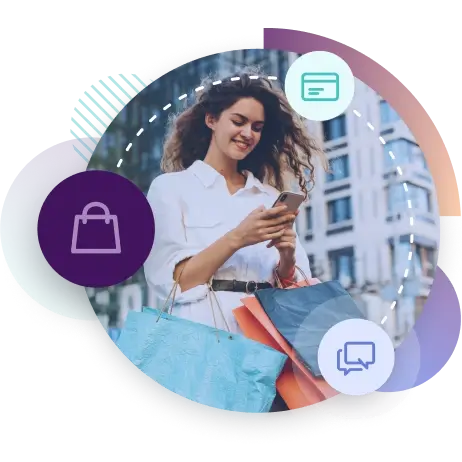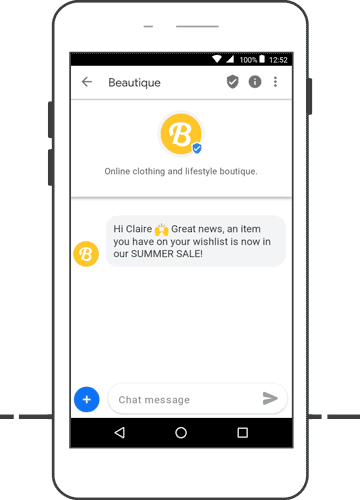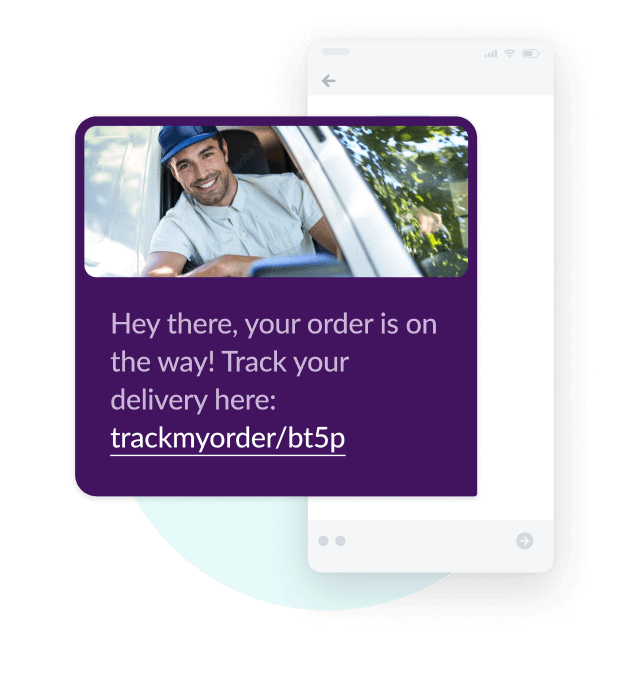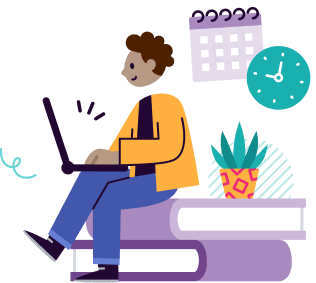INDUSTRIES
Retail messaging
Create engaging experiences for shoppers with our multichannel messaging platform
From personalised promotions and order updates to customer support, Esendex helps retailers connect at every stage of the journey. Reach your audience through SMS, WhatsApp, RCS and Email, all from one powerful and easy-to-use platform.

Deliver better retail experiences for your customers
81%
… of consumers would consider buying a product after receiving a marketing message via WhatsApp.
Source: Esendex
73%
… of customers use multiple channels when shopping, and those using 4 or more spend 9% more.
Source: Harvard Business Review
91%
… of consumers are more likely to shop with brands that recognise them and offer personalised recommendations
Source: Accenture
From cart reminders to customer service updates, today’s shoppers expect communication that’s fast, personal and seamless. Our messaging platform gives you the tools to meet those expectations with confidence:
Reliable delivery
Send time-sensitive messages with confidence. Esendex ensures fast, secure delivery at scale so your customers never miss an update, offer or reminder.
Improve ROI
Boost engagement and conversions with targeted, multichannel campaigns. Reach the right customers at the right time with messages that drive measurable results.
Drive efficiency
Automate routine communications like delivery updates and FAQs to save time and ease pressure on your support team. Free up staff to focus on what matters most.
Let’s start sending, together.
Discover the full power of our mobile messaging platform.

Drive action with personalised promotions and timely reminders
Use SMS, WhatsApp and RCS to send time-sensitive offers, product launches and loyalty rewards that cut through the noise. Campaigns are easy to personalise and schedule, helping you deliver messages that are relevant and perfectly timed.
Recover lost sales with automated abandoned cart messages that remind customers of what they left behind. You can include product details, images or discount codes to encourage them to return and complete their purchase.
Deliver better service with proactive and responsive messaging
Support teams can send updates before customers even have to ask. Whether it’s letting them know an item is back in stock or confirming a resolution, proactive messaging helps manage expectations and reduce inbound contact.
You can also automate post-purchase communications, like feedback requests or order confirmations. This saves your team time, keeps your service consistent and ensures customers always feel informed and valued.


Streamline fulfilment with real-time delivery and order updates
Make sure customers know when to expect their delivery, when a click-and-collect order is ready or if there’s a change to their collection point. Real-time updates improve the post-purchase experience and reduce delivery-related queries.
Retailers can use Esendex to set up automated workflows that remove the need for manual outreach. It saves time, improves internal efficiency and ensures customers are never left in the dark.
SMS remains one of the most effective communication tools in retail. With high open rates and near-instant delivery, it’s ideal for time-sensitive messages such as delivery notifications, appointment reminders and promotional alerts.
Customers don’t need to download an app or be connected to Wi-Fi, which makes SMS a reliable way to reach anyone, anywhere.
WhatsApp offers a familiar and trusted way to reach your customers. With the WhatsApp Business Platform (API), retailers can share order updates, respond to queries and run promotions within a secure, branded environment.
Messages can include images, documents and quick reply buttons, giving you more ways to connect.
RCS upgrades traditional SMS with rich media and interactivity, all within the customer’s native messaging app.
Retailers can send branded messages with images, product carousels, suggested replies and embedded links to create a more engaging experience.

Email is a powerful tool for retail engagement. It’s perfect for sharing longer-form content like order confirmations, personalised offers, newsletters and loyalty updates.
With the ability to brand messages and segment audiences, email helps retailers deliver targeted, consistent communication that drives customer retention and repeat purchases.
Why retailers trust Esendex
Proven experience in retail messaging
With over 20 years helping retailers communicate with their customers, we understand the challenges of the sector. From seasonal promotions to delivery updates, our solutions are built to support the full retail journey.
Scalable and secure platform
We process over 5 billion messages every year, with ISO 27001 certification and full GDPR compliance. Whether you’re sending thousands of updates or launching a large-scale messaging campaign, you can rely on us to deliver.
Connect via our platform or API
Use our web-based platform or connect via API to fit your existing tools and workflows. Whether you’re launching one campaign or managing thousands of messages a day, we make it simple to get started and scale up.

“Adding WhatsApp and chatbot functionality to our communications has made a significant impact already as it allows us to triage, automate and resolve customer queries from a single, secure platform that is known and trusted by our customers.“
Lucie Riley – Chief Operating Officer, Rhenus Home Delivery
Insights
What happens after checkout? Improving the post-purchase experience
Business messagingWhat we’ll cover What is the post-purchase experience? Why does the post-purchase experience matter? Examples…Automation & AI Readiness Gap: Which UK sectors are falling behind?
TechnologyWhat we’ll cover The current state of automation and AI adoption in the…How conversational banking is reshaping customer experiences
Customer ServiceWhat we’ll cover What is conversational banking?Why is conversational banking on the rise?Real-world…



